Are you passionate about making a positive impact in the lives of seniors in your community? With the growing need for programs that support and enrich the lives of our elderly population, securing funding becomes essential. In this article, we'll explore effective strategies for writing compelling letters that can attract the necessary resources for senior citizen initiatives. Join us as we dive into practical tips to enhance your outreach efforts and discover how you can help foster a vibrant environment for seniors'read on to learn more!
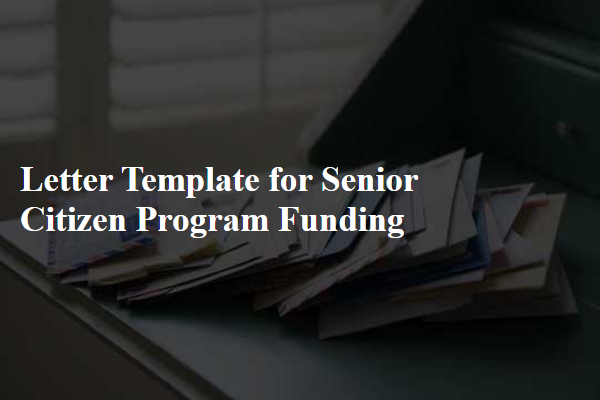
Purpose and Goals
The Senior Citizen Program aims to enhance the quality of life for the aging population by providing essential resources, community support, and social engagement activities. Targeting individuals aged 65 and older in urban areas such as New York City and Los Angeles, this program focuses on addressing key issues such as isolation and access to health services. Goals include increasing participation in wellness activities by 30% within the first year, offering weekly meal services, and organizing monthly social events to foster relationships among participants. The program also strives to connect seniors with local health resources, ensuring a minimum of 80% of participants receive regular health screenings. Funding will facilitate the development of tailored workshops that emphasize mental health, physical fitness, and nutrition, supporting the holistic well-being of seniors in our communities.
Target Audience and Impact
Senior citizen programs play a crucial role in enhancing the quality of life for older adults, fostering social connections, and providing necessary resources. In communities such as Springfield, where over 25% of the population is aged 65 and above, targeted initiatives can offer valuable support, including physical wellness activities, social engagement opportunities, and educational workshops tailored to seniors' needs. The impact of such programs extends beyond individual health and well-being; they also encourage community interactions, reduce social isolation, and promote a sense of belonging among seniors. Funding for these initiatives can facilitate the implementation of transportation services, health screenings, and mental health support, significantly benefiting both participants and the broader community. Engaging programs can also contribute positively to local economies by increasing participation in community events and stimulating volunteer opportunities.
Detailed Budget Plan
The funding for the senior citizen program requires a meticulous budget plan to ensure maximum impact. Personnel costs are estimated at $120,000 annually, accommodating salaries for three full-time staff members, including a program coordinator and two social workers. Facility rental expenses for community space in downtown Springfield are projected at $24,000 annually, providing a welcoming environment for bi-weekly engagement activities such as health screenings and social gatherings. Outreach initiatives, including printed materials and digital marketing, are allotted $15,000 to raise awareness about the program within the surrounding neighborhoods. Transportation services for seniors, ensuring accessibility to events, will be budgeted at $10,000, covering fuel and maintenance for a dedicated van. Additionally, a $5,000 allocation for refreshments and supplies during program activities supports community-building efforts. This detailed budget plan totals $174,000 for the program's first year, aiming to enhance the quality of life for seniors in Springfield.
Program Evaluation and Metrics
The evaluation of senior citizen programs, such as community support initiatives or social engagement activities, entails assessing the effectiveness and impact of funded services aimed at improving the quality of life for seniors. Metrics, including participation rates, which measure the number of seniors (aged 65 and older) engaging in service offerings, provide crucial data. Outcome measures, such as improvements in mental health, as indicated by reduced depression rates (a 20% decrease as seen in similar programs), play a significant role in determining program success. Surveys assessing satisfaction levels and quality of services reflect participants' perceived benefits, further informing adjustments and enhancements. Additionally, tracking the frequency of service utilization helps identify trends and areas for expansion, ensuring that funding allocation aligns with community needs and the evolving demographics of elderly residents.
Stakeholder Engagement and Partnerships
Stakeholder engagement in senior citizen program funding plays a crucial role in enhancing service delivery and ensuring sustainable outcomes. Collaborative partnerships with local government agencies, non-profit organizations, and community groups amplify resource allocation, facilitating diverse services for seniors aged 65 and older. Events such as community forums, scheduled quarterly meetings, and outreach initiatives foster communication and gather valuable input, enriching program design. Strategic alliances with healthcare providers, such as hospitals and clinics, promote holistic care for seniors, while partnerships with educational institutions assist in leveraging volunteers, creating engaging activities that enhance social interaction and mental well-being. Establishment of advisory boards composed of senior representatives ensures programs align with their specific needs and preferences, thereby maximizing impact and ensuring effective use of funding resources.
Letter Template For Senior Citizen Program Funding Samples
Letter template of inquiry regarding funding opportunities for elderly programs
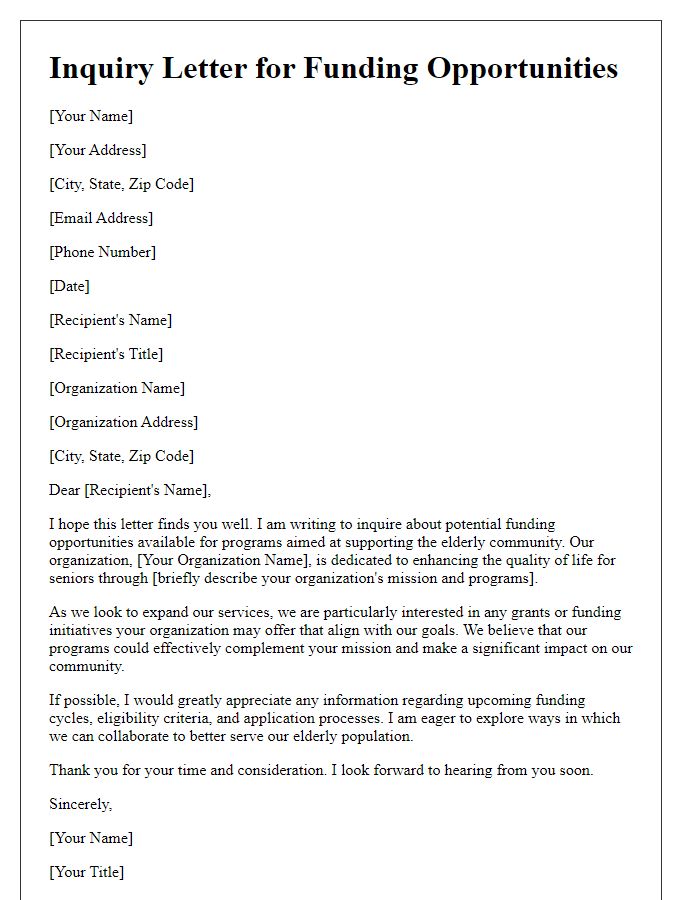
Letter template of notification to funders about senior citizen project needs
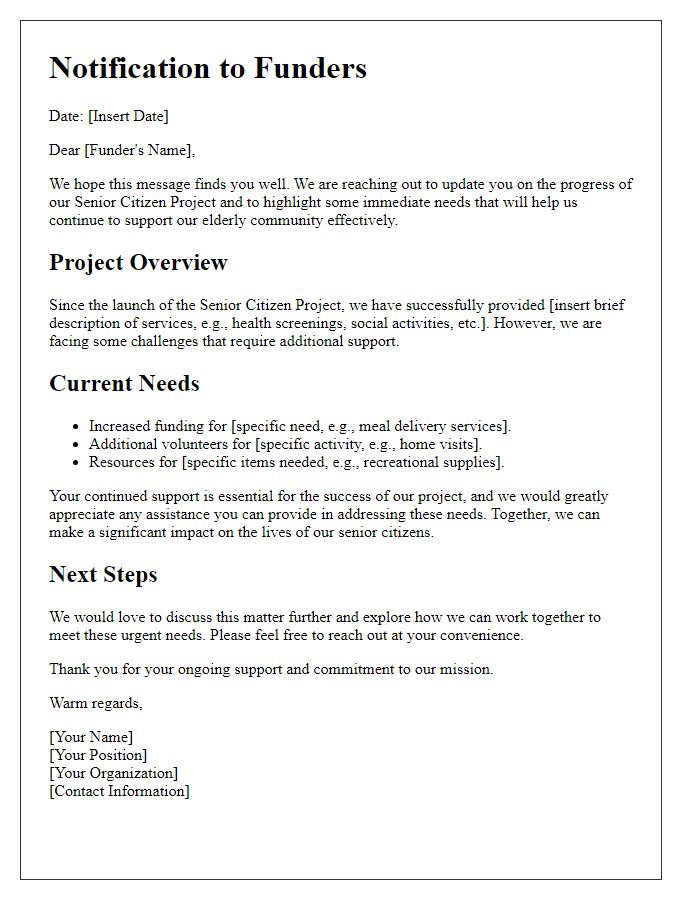

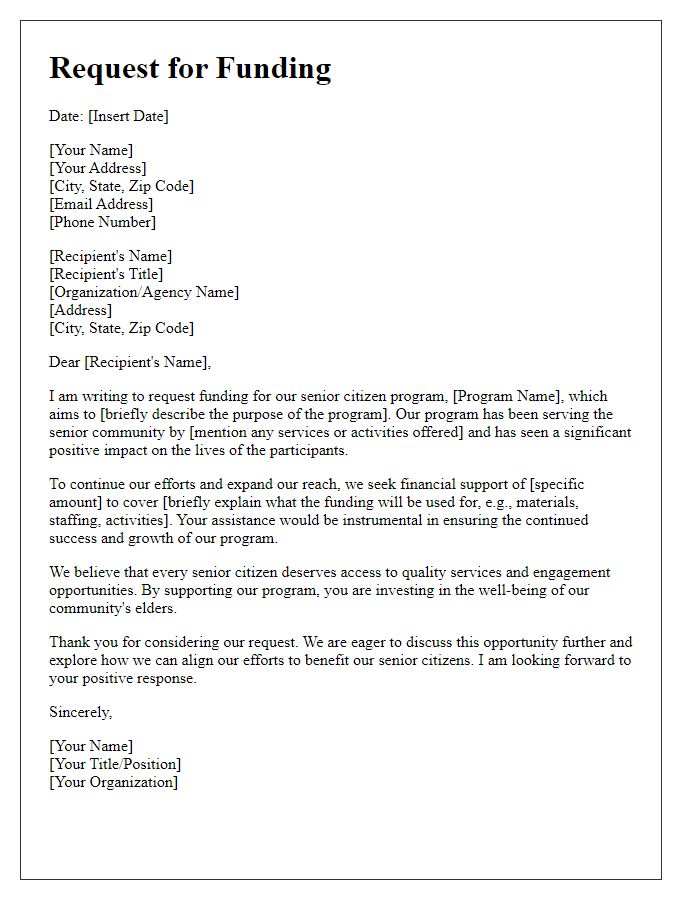
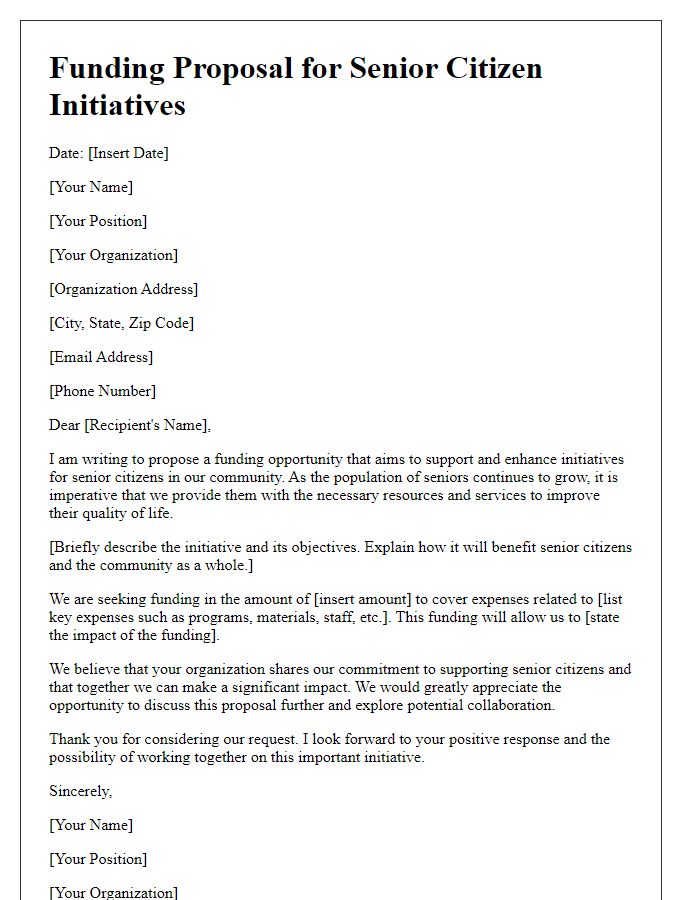


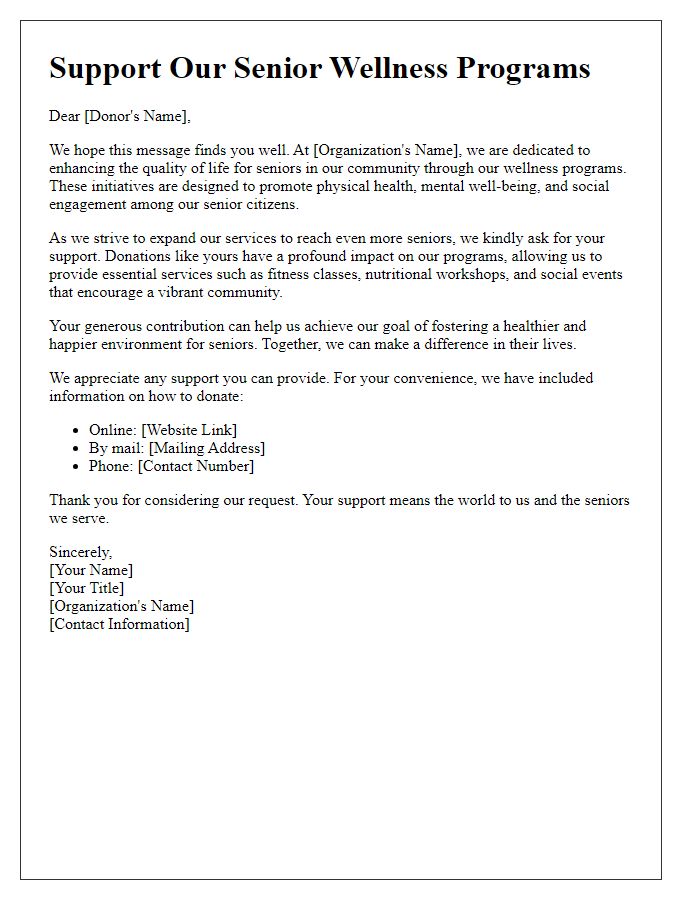
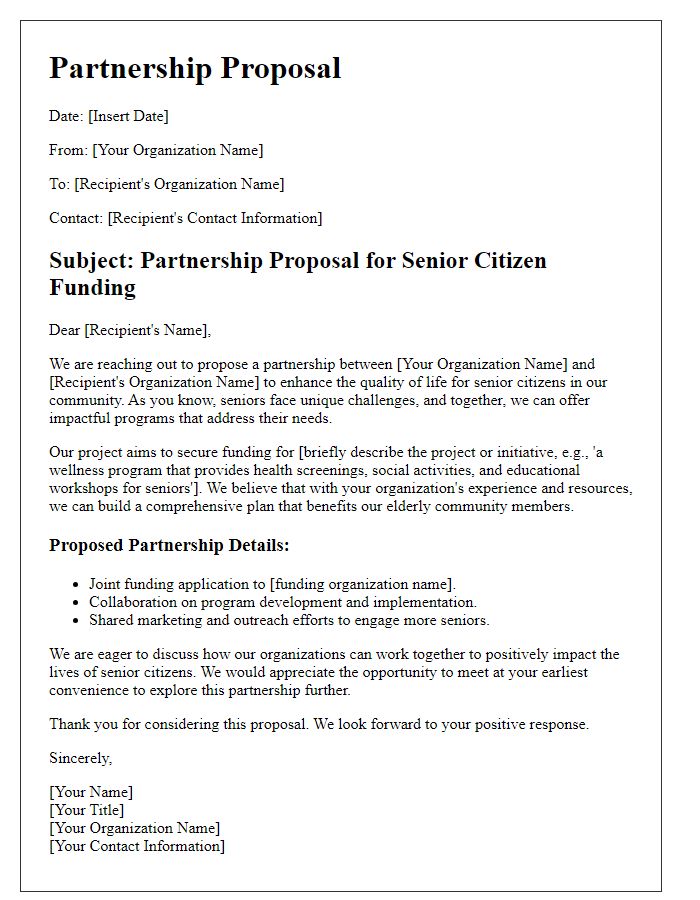
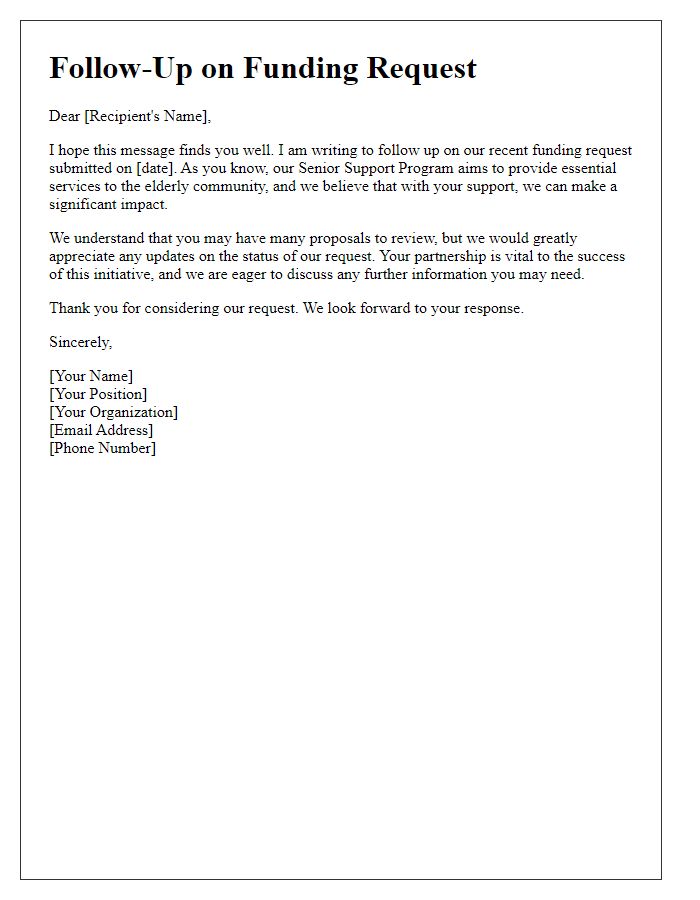
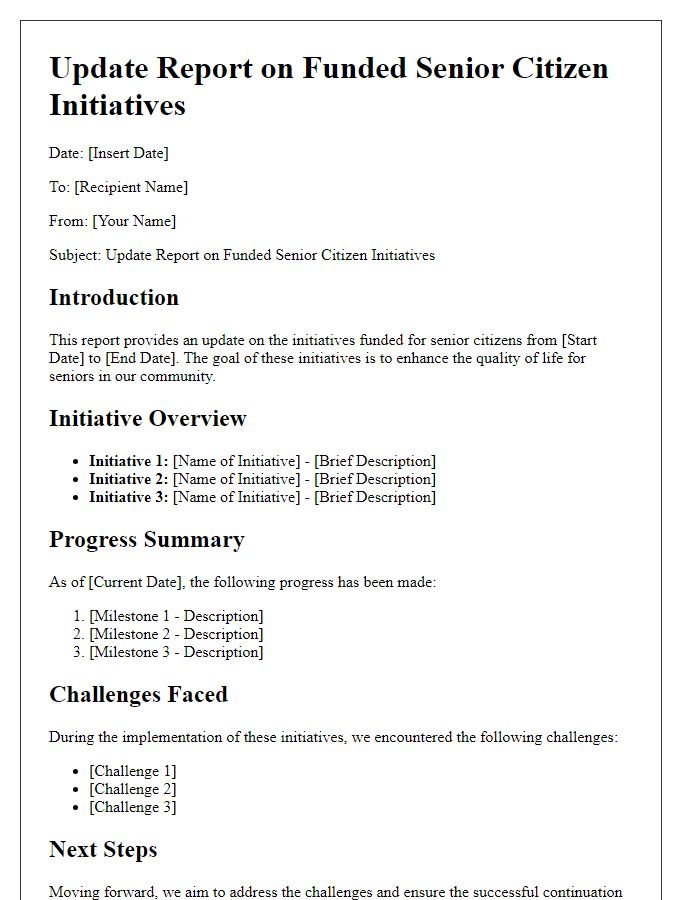

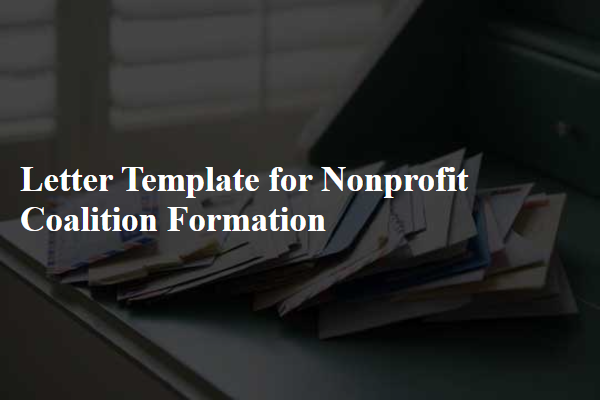



Comments